Impacting The Financial and Clinical Power of Preventive Care: A Deep Dive into RPM & CCM
The healthcare landscape is undergoing a monumental shift from a reactive, fee-for-service model to a proactive, value-based system focused on keeping patients healthy. At the forefront of this revolution are two critical services: Remote Patient Monitoring (RPM) and Chronic Care Management (CCM). Together, they form a powerful duo for preventive medicine, dramatically improving patient outcomes while creating a new, sustainable revenue stream for clinics.
The Pillars of Modern Preventive Care
1. Remote Patient Monitoring (RPM)
RPM uses digital technology to collect and transmit patient health data (e.g., blood pressure, blood glucose, weight) from their home to their care team. This allows for real-time intervention, preventing complications before they require an emergency room visit. Reimbursement is based on code 99454 for the device transmission and, critically, 99457 for the first 20 minutes of interactive clinical staff time spent reviewing and acting upon that data each month.
2. Chronic Care Management (CCM)
CCM (code 99490) provides non-face-to-face care coordination for patients with two or more chronic conditions. A dedicated care team spends at least 20 minutes per month managing medications, coordinating with specialists, and ensuring the patient understands and follows their care plan, effectively closing the gaps between occasional office visits.
The Synergistic Benefit: When combined, these services create a continuous care environment. A patient’s rising blood pressure (caught via RPM) can be immediately addressed by their care manager (via CCM), who can adjust care plans and provide crucial patient education. This synergy is the ultimate expression of prevention, reducing hospitalizations and giving patients the support they need to thrive.
The Financial Case for Adoption: A Clear Revenue Model
For clinics, the clinical benefits are matched by a compelling financial incentive. Medicare and many private payers reimburse for these services separately, allowing clinics to be paid for the critical work they already do outside of office visits.
Let’s analyze the potential revenue for a clinic with 300 patients enrolled in a combined RPM and CCM program.
- Average Medicare Reimbursement (National Estimate):
- RPM (99454): ~$55 per patient, per month
- RPM Monitoring (99457): ~$55 for the first 20 minutes of review
- CCM (99490): ~ $62 per patient, per month
- Total Reimbursement per patient: ~ $172 per month
- Clinic’s Cost (Partnering with Doxicloud): $60 per patient, per month for the service infrastructure.
- Net Profit Per Patient, Per Month: $172 (Revenue) – $60 (Cost) = $112
- Annual Projection for 300 Patients:
- Monthly Net Profit: 300 patients x $112 = $33,600
- Annual Net Profit: $33,600 x 12 months = $403,200
This projection demonstrates a significant and recurring revenue stream that directly rewards the clinic for delivering high-quality, preventive care. It transforms non-face-to-face time from an overhead cost into a profitable, patient-centered service line.
Implementing with Confidence: The Value of Experience
Launching and managing a successful RPM and CCM program requires expertise in clinical workflows, complex billing codes, compliance, and patient engagement. This is where a seasoned partner becomes invaluable.
It is worth noting that companies like Doxicloud bring over a decade of experience in performing these exact services. They have the proven infrastructure and expertise to handle the entire process—from providing the FDA-approved RPM devices and secure platform to managing patient enrollment, clinical monitoring, and ensuring accurate, compliant billing. This allows physicians and their staff to focus on what they do best: practicing medicine, while Doxicloud manages the operational complexity behind the scenes.
Conclusion: A Win-Win-Win Model
The integration of RPM and CCM is a definitive win for everyone involved:
- Patients win through better health, fewer hospital visits, and continuous support.
- Providers win by delivering higher quality care and strengthening patient relationships.
- Clinics win by unlocking a new, profitable revenue stream that aligns financial health with patient health.
By embracing this model, often with the support of an experienced partner, clinics can successfully navigate the future of healthcare—building a more preventive, profitable, and sustainable practice.











